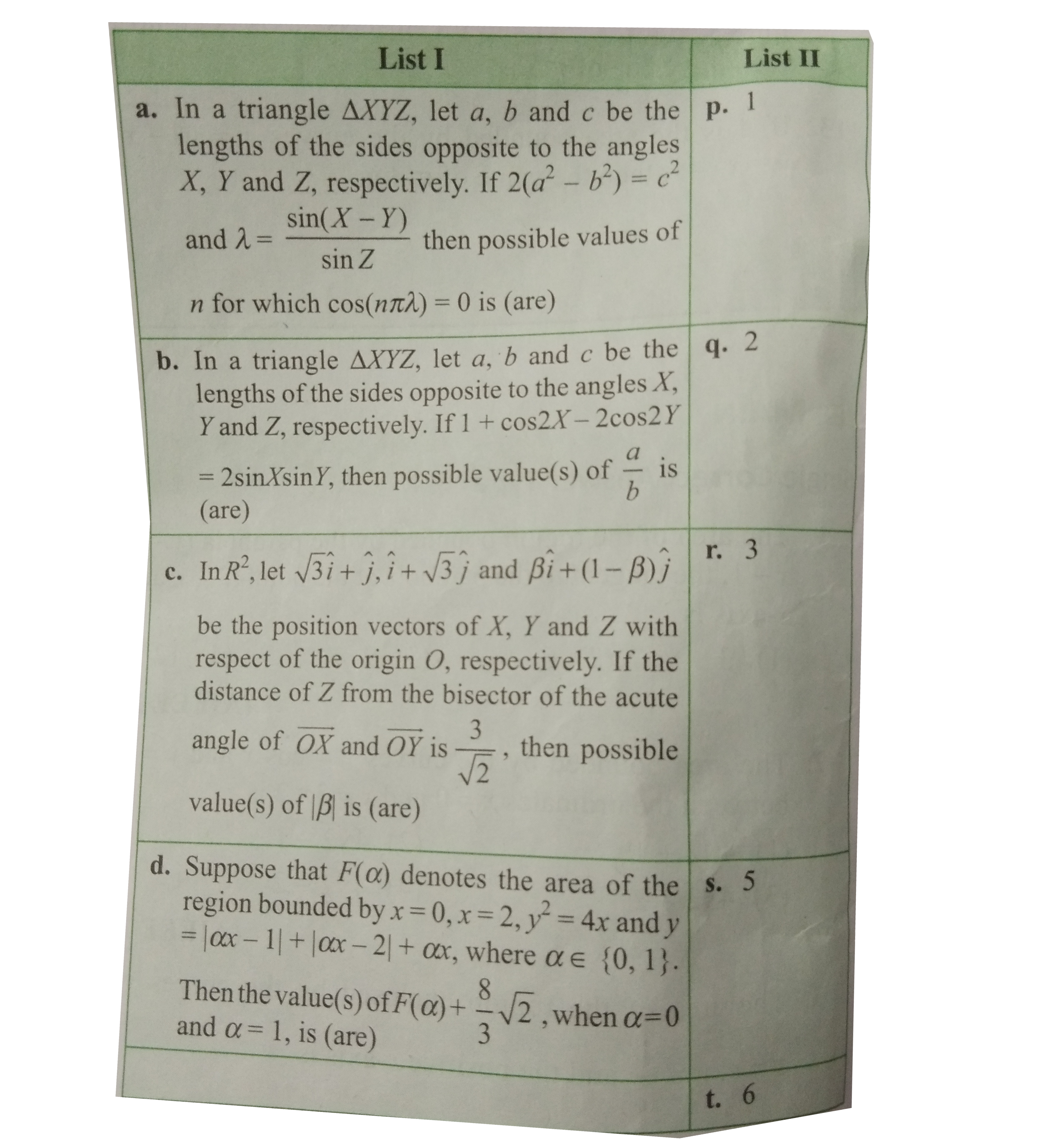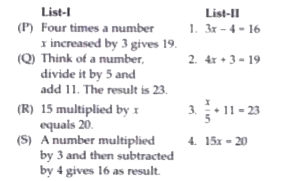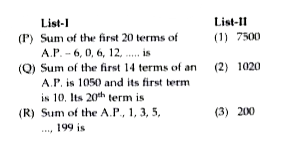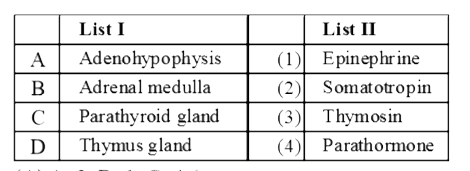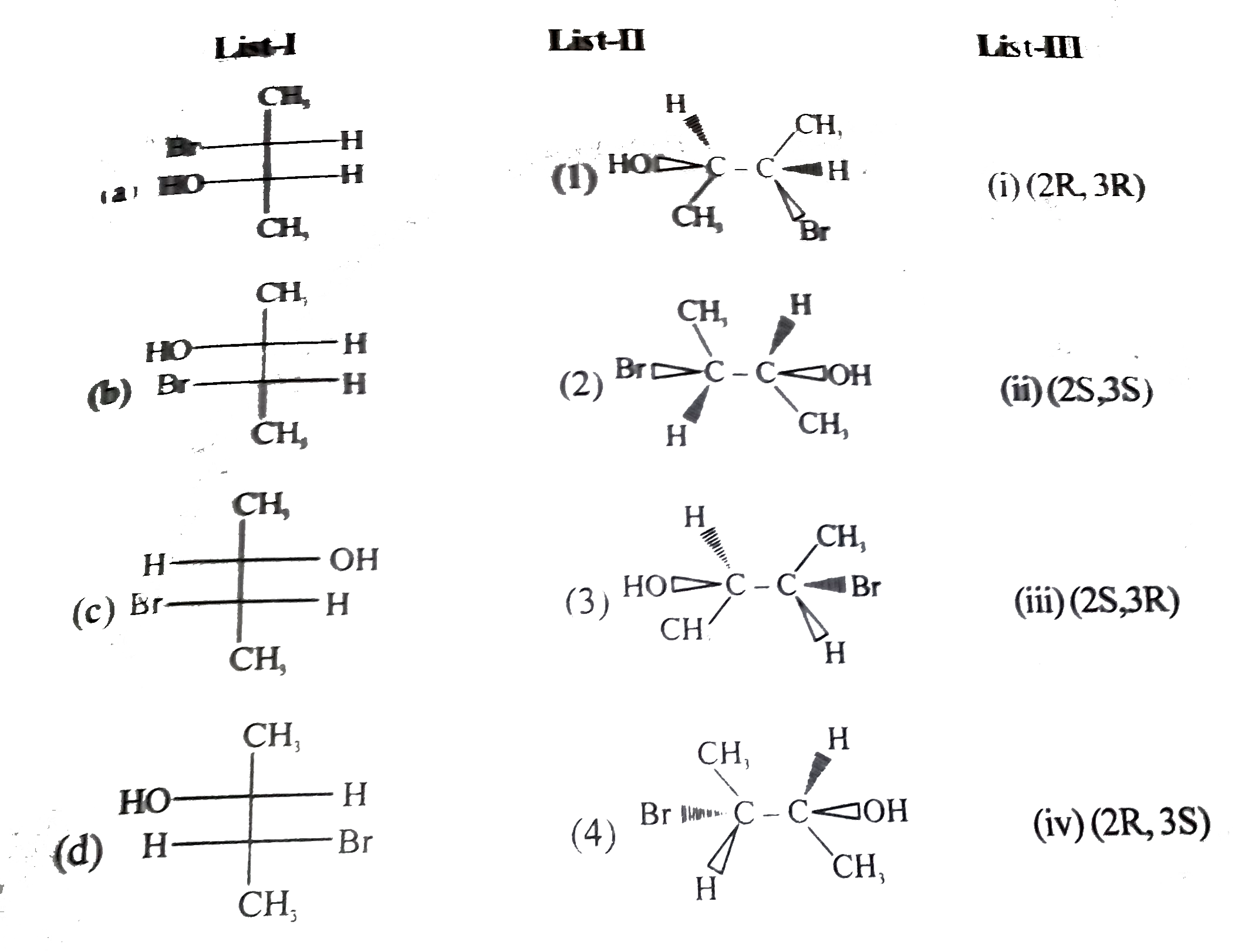Match the type of crystal given in List I with example in List II.
The correct Answer is:B
To match the types of crystals in List I with the examples in List II, we will analyze each type of crystal and its corresponding example step by step.
Step 1: Identify Ionic Crystals
- Definition: Ionic crystals are made up of ions held together by electrostatic forces (Coulombic attraction).
- Example from List II:
- 3. MgO: This is magnesium oxide, which consists of Mg²⁺ and O²⁻ ions.
- Conclusion: The type of crystal "P. Ionic" matches with "3. MgO".
Step 2: Identify Network Crystals
- Definition: Network crystals consist of atoms connected by covalent bonds in a three-dimensional lattice.
- Example from List II:
- 1. AIN: Aluminum nitride forms a three-dimensional network of atoms bonded covalently.
- Conclusion: The type of crystal "Q. Network" matches with "1. AIN".
Step 3: Identify Metallic Crystals
- Definition: Metallic crystals are composed of metal atoms that share a "sea of electrons", allowing for conductivity and malleability.
- Example from List II:
- 2. Mg: Magnesium is a metal and thus represents a metallic crystal.
- Conclusion: The type of crystal "R. Metallic" matches with "2. Mg".
Step 4: Identify Molecular Crystals
- Definition: Molecular crystals are made up of molecules held together by intermolecular forces, not forming a three-dimensional network.
- Example from List II:
- 4. Solid CO₂: Solid carbon dioxide (dry ice) is a molecular solid where the constituent particles are CO₂ molecules.
- Conclusion: The type of crystal "S. Molecular" matches with "4. Solid CO₂".
Final Matching
- P. Ionic → 3. MgO
- Q. Network → 1. AIN
- R. Metallic → 2. Mg
- S. Molecular → 4. Solid CO₂
Summary of Matches:
- P → 3
- Q → 1
- R → 2
- S → 4
---
- Definition: Ionic crystals are made up of ions held together by electrostatic forces (Coulombic attraction).
- Example from List II:
- 3. MgO: This is magnesium oxide, which consists of Mg²⁺ and O²⁻ ions.
- Conclusion: The type of crystal "P. Ionic" matches with "3. MgO".
- Definition: Network crystals consist of atoms connected by covalent bonds in a three-dimensional lattice.
- Example from List II:
- 1. AIN: Aluminum nitride forms a three-dimensional network of atoms bonded covalently.
- Conclusion: The type of crystal "Q. Network" matches with "1. AIN".
- Definition: Metallic crystals are composed of metal atoms that share a "sea of electrons", allowing for conductivity and malleability.
- Example from List II:
- 2. Mg: Magnesium is a metal and thus represents a metallic crystal.
- Conclusion: The type of crystal "R. Metallic" matches with "2. Mg".
- Definition: Molecular crystals are made up of molecules held together by intermolecular forces, not forming a three-dimensional network.
- Example from List II:
- 4. Solid CO₂: Solid carbon dioxide (dry ice) is a molecular solid where the constituent particles are CO₂ molecules.
- Conclusion: The type of crystal "S. Molecular" matches with "4. Solid CO₂".
- P. Ionic → 3. MgO
- Q. Network → 1. AIN
- R. Metallic → 2. Mg
- S. Molecular → 4. Solid CO₂
- P → 3
- Q → 1
- R → 2
- S → 4
Topper's Solved these Questions
- BOOK - MODERN PUBLICATIONCHAPTER - SOLID STATEEXERCISE - COMPETITION FILE - OBJECTIVE TYPE QUESTIONS (MATRIX MATCH TYPE QUESTIONS)3videos
SOLID STATE
- BOOK - MODERN PUBLICATIONCHAPTER - SOLID STATEEXERCISE - COMPETITION FILE - OBJECTIVE TYPE QUESTIONS (INTEGER TYPE OR NUMERICAL VALUE TYPE QUESTIONS)12videos
SOLID STATE
- BOOK - MODERN PUBLICATIONCHAPTER - SOLID STATEEXERCISE - COMPETITION FILE - OBJECTIVE TYPE QUESTIONS (D. MULTIPLE CHOICE QUESTIONS)11videos
SOLID STATE
- BOOK - MODERN PUBLICATIONCHAPTER - POLYMERSEXERCISE - Competition file (OBJECTIVE TYPE QUESTIONS) (C. MULTIPLE CHOICE QUESTIONS)(Integer Type Questions)6videos
POLYMERS
- BOOK - MODERN PUBLICATIONCHAPTER - SOLUTIONSEXERCISE - UNIT PRACTICE TEST14videos
SOLUTIONS
Similar Questions
Knowledge Check
- Question 1 - Select One
Match the quantities given in List-I with the units given in List-II
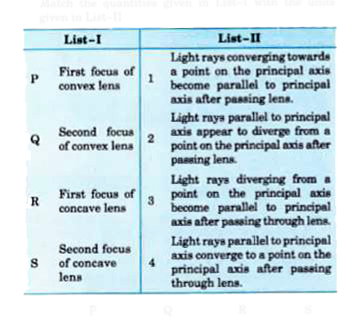 APQRS4321BPQRS3421CPQRS2314DPQRS1234
APQRS4321BPQRS3421CPQRS2314DPQRS1234 - Question 2 - Select One
Match the statements/expressions given in List I with the values given in List II.
 AabcdsrqpBabcdqsrpCabcdsrpqDabcdqspr
AabcdsrqpBabcdqsrpCabcdsrpqDabcdqspr - Question 3 - Select One
Match the salls in List-I with their use in List-II.
 AP- 2, Q-2,3 R-2,4 S-1,3BP-1,2 Q-2,3 R-1,4 S-1,3CP-1,4 Q-1,3 R-2,3 S-2,4DP-2, Q-1,3, R-1, S-4
AP- 2, Q-2,3 R-2,4 S-1,3BP-1,2 Q-2,3 R-1,4 S-1,3CP-1,4 Q-1,3 R-2,3 S-2,4DP-2, Q-1,3, R-1, S-4


